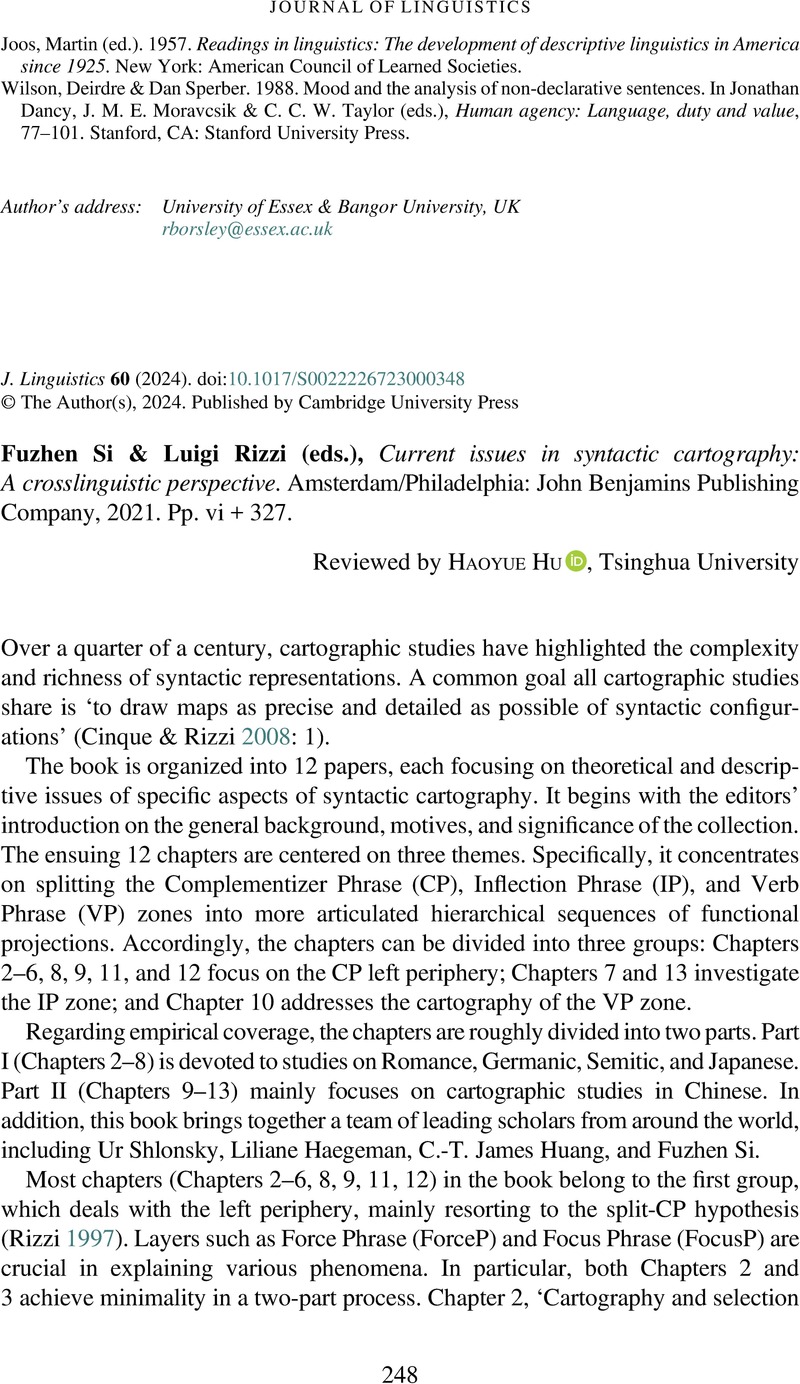No CrossRef data available.
Article contents
Fuzhen Si & Luigi Rizzi (eds.), Current issues in syntactic cartography: A crosslinguistic perspective. Amsterdam/Philadelphia: John Benjamins Publishing Company, 2021. Pp. vi + 327.
Review products
Fuzhen Si & Luigi Rizzi (eds.), Current issues in syntactic cartography: A crosslinguistic perspective. Amsterdam/Philadelphia: John Benjamins Publishing Company, 2021. Pp. vi + 327.
Published online by Cambridge University Press: 09 January 2024
Abstract
An abstract is not available for this content so a preview has been provided. Please use the Get access link above for information on how to access this content.

- Type
- Book Review
- Information
- Copyright
- © The Author(s), 2024. Published by Cambridge University Press
References
REFERENCES
Cinque, Guglielmo & Rizzi, Luigi. 2008. The cartography of syntactic structures. CISCL Working Papers on Language and Cognition 2, 43–59.Google Scholar
Cruschina, Silvio. 2011. Discourse-related features and functional projections. Oxford: Oxford University Press.Google Scholar
Rizzi, Luigi. 1997. The fine structure of the left periphery. In Haegeman, Liliane (ed.), Elements of grammar: A handbook of generative syntax, 281–337. Dordrecht: Kluwer.CrossRefGoogle Scholar



